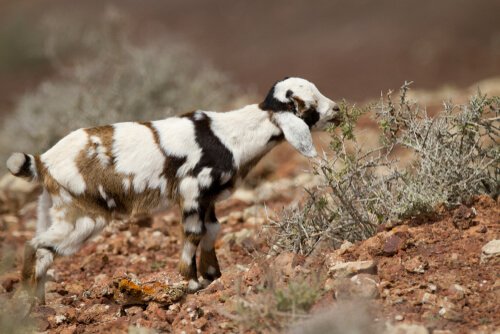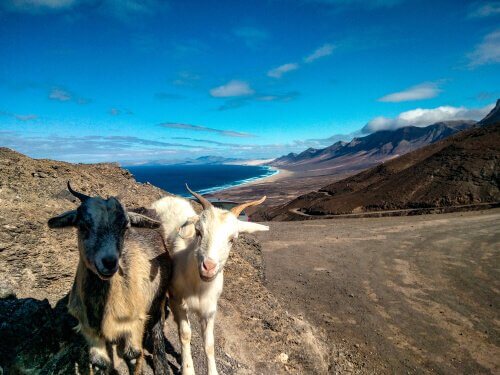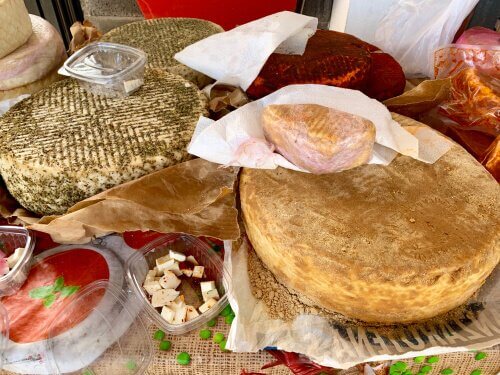The Fuerteventura Goats and The Amazing Majorero Cheese

The Fuerteventura goats (sometimes called Majorera goats) are a symbol of one of the least known of the Canary Islands off the Peninsula of Spain.
Because it’s a volcanic island, their climate is a tough one to live in. However, these goats have allowed the few assets of the island to be farmed. As a result, it has been possible to provide for the local people for thousands of years.
It’s somewhat difficult to trace the history of the Fuerteventura goats. When the colonizers arrived in the Canary Islands in the 15th century, these animals were already widely inhabiting the island. However, some scientific excavations trace their history back to the Majorera island more than 3,000 years ago.
Fuerteventura Goats
Without a doubt, the Fuerteventura goats are a symbol of this natural tourist location. It would be difficult to visit this place and not see these animals everywhere. You’ll probably end up buying a souvenir that represents these charming animals! Even though you can find these goats are throughout the rest of the islands, they originated in Fuerteventura.
The people of Fuerteventura breed the Majorera goats mainly for the production of dairy, and especially for the production of Majorero cheese. This is one of the most sold products in the island’s markets. Out of the four breeds of goats that exist in the Canary Islands, Majorera goats produce the most dairy-based products. The rest of the breeds mainly produce meat.

The Majorera goat is a species with long, thin legs, long ears and arched horns. Their hooves adapt very well to dry weather and have a black color. Their fur is multicolored, with several spots of brown, white and black. The goats’ hair is short, well-adapted for coping with the hot season, and their noses are dark-colored.
Experts believe that the Fuerteventura goats are an African mix breed, mainly of Nubian and Maltese goats, mixed with the native goats that lived on the island back in the day.
Traditionally, farmers keep these goats in large cattle groups and milk them only once a day. They collect the milk in tofios, special pots used in the Majorera culture. These are pots, usually a reddish color, that have a large spout to collect the milk.
Majorero cheese
If there’s one thing that makes Fuerteventura goats stand out, it’s the cheese from their milk. Locals produce Majorero cheese in six different towns on the island. In addition, it also has a “Designation of Origin” certificate since 1996. This is a category that recognizes the value of a product produced locally, just like this one.

The cheese is solid, and there are both soft and cured varieties. Its taste and tradition have marked the culture of the island. If you combine it with different dressings then this turns the Majorero cheese into a product with a thousand varieties. In conclusion, leaving the Canary Islands without tasting the cheese made from the Majorera goats’ milk is unforgivable.
